Do you know your problem? You love chess too much.My opponents never know who will show up. I am a seeker of chess truth looking for the best moves, adhere to solid principles in all my games, and will generally choose the most dynamic line. I play against pieces. At other times, I play offbeat, substandard moves motivated by my perception of the psychology of my opponent. I aim, first and foremost, to remove my adversary from his or her comfort zone. In this way I've lost many games that I should have won because I'm making errors; if I simply made the best moves I could find, my opponent would collapse. I've also had some success. Knowing an opponent attempted to play the Torre Attack against almost everything, I played a strange second move: 1.d4 Nf6 2.Nf3 h6!? My opponent had no idea how to proceed.
Curt Collyer
Chess is a game. I try to have fun with it. I'll play the Fried Fox opening just for kicks, or to intimidate a weaker opponent. I'll play the Polish for the same reason. Even so, I play it recalling that Tony Miles won with Black against Anatoly Karpov because he was responding to intimidation--what can you play against someone that know all the lines in all the books? Intimidation can work either way, and the response might prove intimidating as well, hence the popularity of books like Joe Gallagher, Beating the Anti-Sicilians (1994), which I turned to years ago to confront the accursed Grand Prix Attack.
This feeling of intimidation leads many players to seek out obscure lines. Sicilian players are known to be booked up because the lines are so deep, so complex, and so richly analyzed that they have no choice. In order to meet 1.e4 with 1...c5, a player needs immense preparation. Playing 1...c5 more or less affirms that one is prepared, so it strikes fear into the hearts of 1.e4 players, who in anticipation expend the time they have for preparation looking for ways to take Sicilian players "out of book."
Players of the French Defense are not so booked up, and yet the French, too, inspires fear among 1.e4 players. Instead of playing the best moves 1.e4 e6 2.d4 d5 3.Nc3, White adopts an anti-French system. 3.Nc3 offers the best prospects of maintaining White's initiate, but it invites the complex lines of the Winawer
Among the most common anti-French systems, at least among my internet opponents, is the Exchange variation: 1.e4 e6 2. d4 d5 3.exd5. Black gets no problems and has equality on move three. The Advance variation (1.e4 e6 2.d4 d5 3.e5) is more principled, although it trades White's dynamic advatage--initiative--for a static one--space. The Advance says to Black, "okay, you won't let me attack f7, so you'll have to fight for f6." Then there's the Tarrasch: 1.e4 e6 2.d4 d5 3.Nd2. It is hard to know what to say about this violation of opening principles in which White forces himself to move one piece twice in the early stages of the game. Even so, in practice, the Tarrasch seems to get results.
I'll admit that these lines--Exchange, Advance, Tarrasch--are considered main lines, not really anti-French systems. They offer White fewer prospects than 3.Nc3, but also require less opening knowledge. At least it seems so until the White player runs into a few booked up French players who have their own well developed systems--sometimes even a little offbeat--against each of them. In Spokane, as they say in Seattle, you've got to know how to play against the French, because everyone in Spokane plays the French.
Most of the time I don't need to worry about playing against the French.
I tend to prefer queen's pawn openings in important games.Last night in round three of the Christmas Chaos G/45 tournament, I had White against Ron Weyland. He plays the French, and for reasons unknown to me, when I sat down to the ticking clock, I felt like playing 1.e4, so the game began.
"Playing with Databases"
Stripes,J (1722) - Weyland,R (1456) [C00]
Christmas Chaos Spokane (3), 08.01.2009
1.e4 e6 2.c4
Black to move
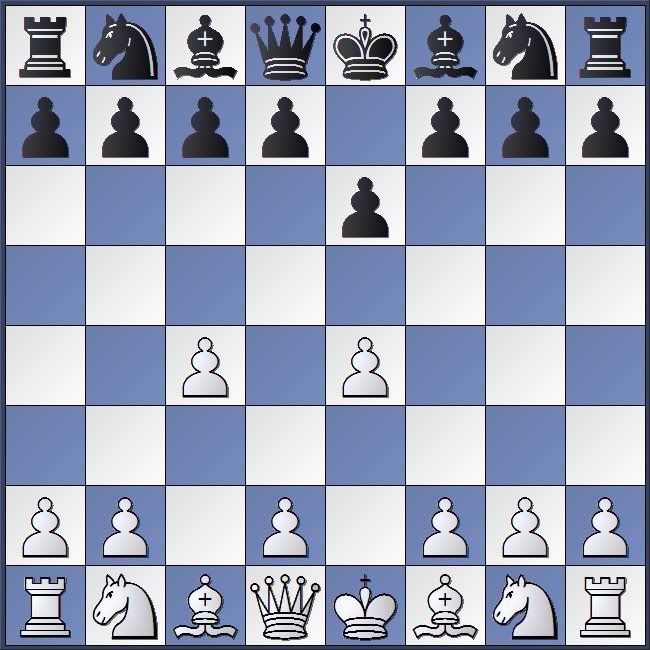
What is this nonsense? 2.c4?
The seeker of truth was not in the room. Instead, the man who moved the White pieces was the one who "loves chess too much." That's what NM Curt Collyer said to me when I was paying him for lessons and wanted to look at a bizarre response to some line of the French in which Black gives up a knight for two pawns, gaining only an easily blockaded passed pawn. For the material, Black gains no initiative, no increase in piece mobility, no vulnerabilities in the White fortress. Black gives up material for no compensation. It might be fun to try in a blitz game against a weak opponent, but it's mostly lunacy. Collyer, by the way, gave me some good materials to employ against the Tarrasch, and his line has brought good results. As he is from Spokane, and has become our strongest home grown player, he is an expert on the French.
Earlier this week, I was following a conversation in the forums of one of those correspondence sites that I've been writing about. Someone had inquired about the anti-French line 2.c4. I thought it was a bizarre idea, although I've faced it many times from the Black side, scoring close to 70% against it. After some comments, however, one of the strongest players on the site, Korch, noted that the resulting position occurs in the repertoire of Latvian Grandmaster Normunds Miezis, but from the English: 1.c4 e6 2.e4. So, I looked at some of Miezis's games, of which there are quite a few; he scores well.
After spending this time looking through Grandmaster games in a particular opening, it made a little bit of sense to give it a try over the board.
2... d5 3.exd5 exd5
My opponent met the lunacy with sensible principled moves: the same ones I've used against it.
4.Nf3
Another slightly odd move. I thought, perhaps Ron will try 4...d4, and I'll end up with a game resembling some lines in the Reti. That way I can abandon this opening experiment and get on with winning the game in the usual way. He would have none of this plan.
4.d4 is the normal move.
4...Nf6 5.d4 Bb4+ 6.Nc3 Qe7+
Black is already equal.
7.Be2 0–0 8.0–0
Black to move
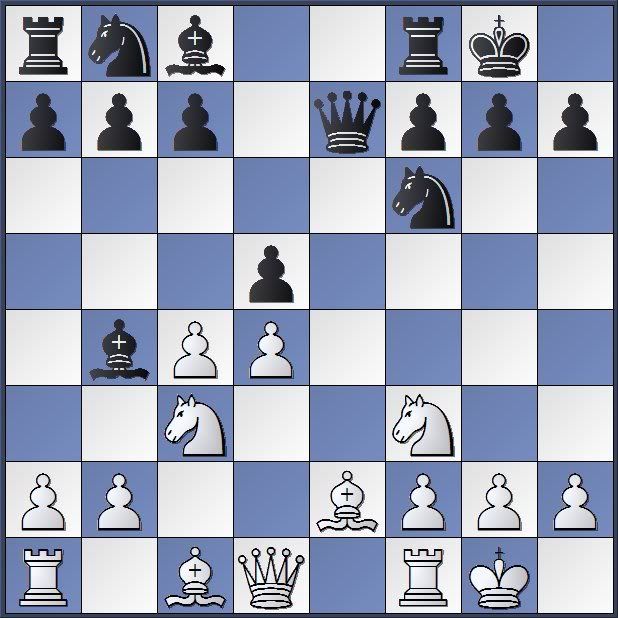
I can find reference games up to this point, but not by strong players. Still, it seems that Black has a reasonable plan: create an isolated d-pawn for White, trade off the minor pieces, win that isolated pawn and go into the endgame with a clear advantage.
My opponent had another idea: create a battery on the e-file to see if he can do something about that bishop.
8...Re8 9.Ne5
9.Re1 is better.
9...Be6 10.Qb3 c6?!
Black needs to mobilize his queenside. 10...Nc6 frees the rook and contests more of the center.
White to move
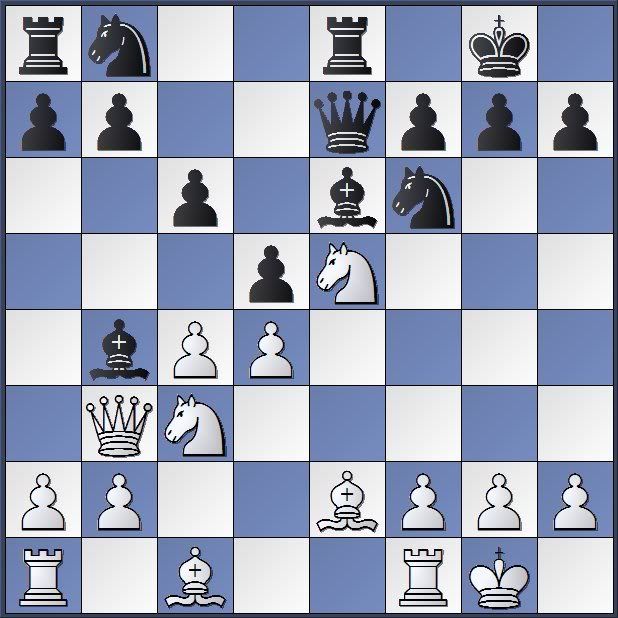
11.Bg5 Bxc3 12.bxc3 h6 13.Bh4 g5 14.Bg3 Ne4 15.cxd5 cxd5
White to move
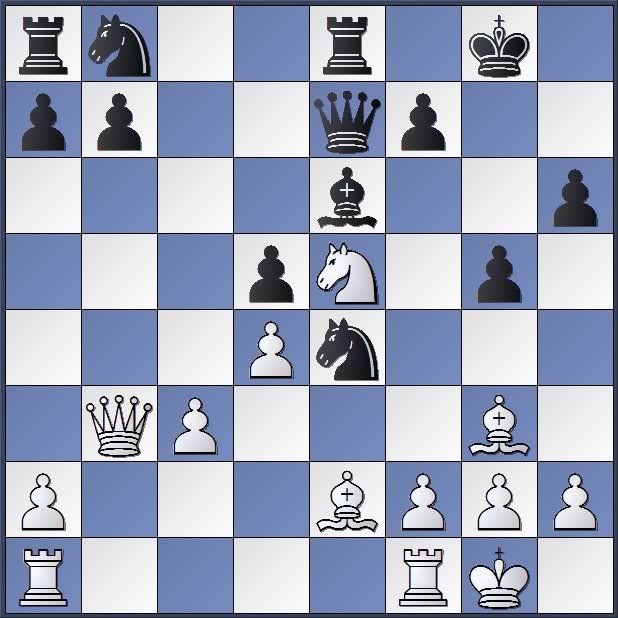
16.Rab1?
White had been building a slight advantage due to Black's inaccuracy on move 10, but this error brings Black back into the game.
16...Nd6??
16...Nd2=
17.f4+- f6 18.Nd3 Bf5 19.Rfe1 Qe3+??
Now, it is over.
White to move
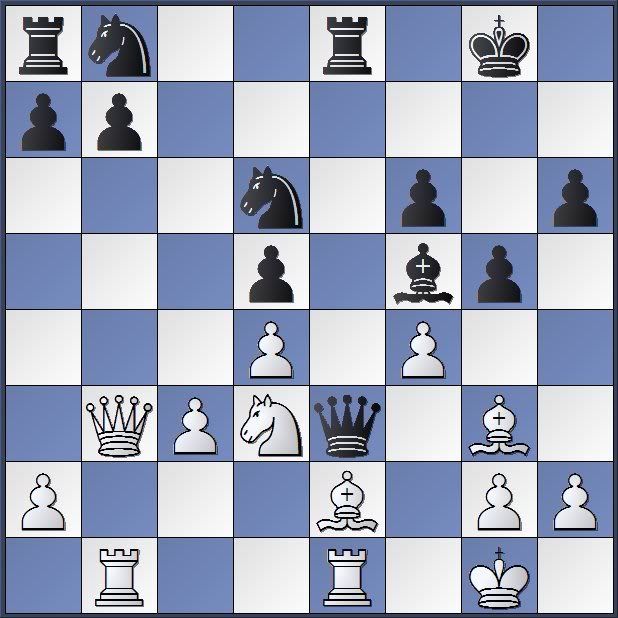
20.Bf2 Qxe2 21.Rxe2 Rxe2 22.Qxd5+ Be6 23.Qxd6 Nd7 24.d5 Bf5 25.Rxb7 Rd2 26.Ne1 Nf8 27.Qe7 1–0
White won an easy game. This ease stemmed not from his opening choice, but from Black's egregious errors. Nevertheless, White's offbeat anti-French may not be quite as bad as it first seems. It can be a nice change of pace if you love the game of chess. When you need to win, however, there are better choices.














I am not afraid of Sicilian - I play Bb5, my only problem is how to play against 2. ...e6, I am looking at that now. But French is inconvenient for me, online I didn't do well until I started to play Exchange variation. Somebody has yet to play French against me OTB.
ReplyDeleteI can't make intentionally unsound move in the opening, even against weaker opponent, but I can make less popular move to get him off the book.
Are you sure 16...Nd2=? He gets exchange for the pawn, though you have 2 bishops, I don't know.
RE: 16...Nd2=
ReplyDeleteThe equal sign has many uses in chess annotations, perhaps too many. Often it means equal and drawing. Here, it means equivalent imbalances. Black gets material. White gets the bishop pair and heavy pieces on the seventh rank.
My opponent told me after the game that he's looked at that move. In our postgame analysis, it was clear that I still had the initiative, and that he needed to defend accurately to avoid disaster. White is certainly no worse despite losing the exchange. But, White's attack is not overwhelming either.
With accurate play it is hard to find a concrete advantage for either side despite the imbalance.
What you've got after 5.d4 in your game is an Exchange Variation French, the variation where White follows up with 4.c4. I played your move order (2.c4) once against John Julian in a Spokane City Championship to try and confuse him. He just played 2...c5 and transposed into a Sicilian where White has played a premature c4.
ReplyDeleteThere's nothing horribly wrong with 2.c4, but it's going to transpose into something less than optimal for White.